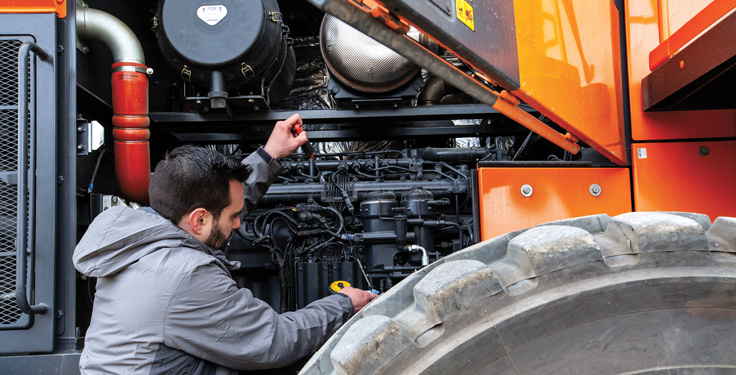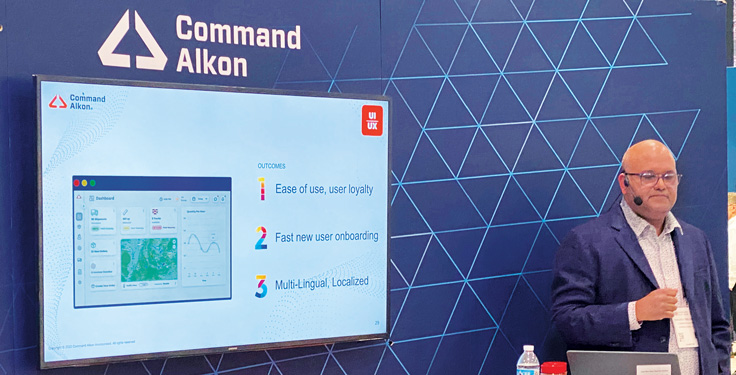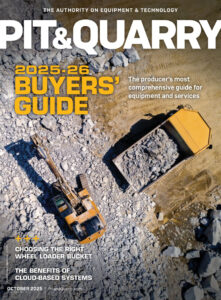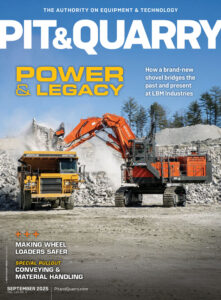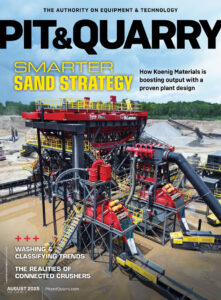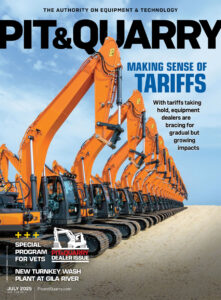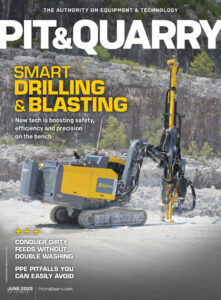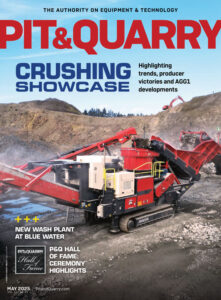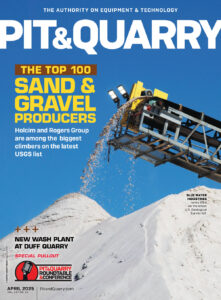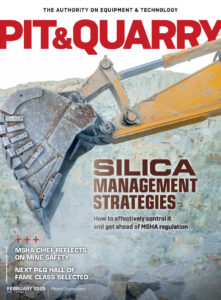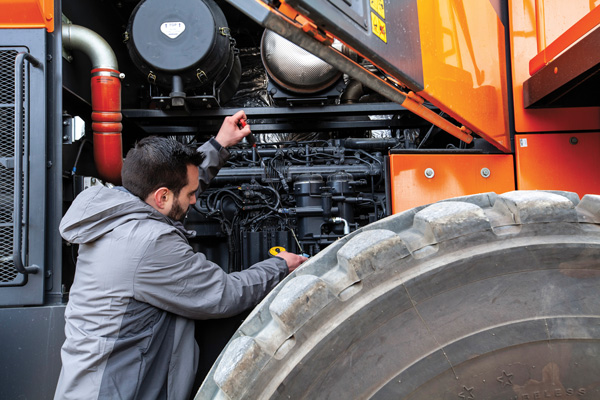
Wheel loaders are powerful workhorses on any jobsite, including mines and quarries.
They can easily move across rugged terrain and quickly load rocks and sand into high-sided trucks or hoppers. While they are built to stand up to tough conditions, they do require routine maintenance to keep working at their best.
“Regular preventive maintenance is critical to keep the wheel loaders in your fleet operating productively and safely in mining and quarry environments,” says Bill Zak, wheel loader product manager at Develon. “Plus, it can alleviate machine downtime and reduce repair or replacement costs.”
Follow these tips for proper preventive maintenance in wheel loaders:
Seven critical care tips

1. Follow the owner’s manual. If you are going to perform most of your wheel loader’s maintenance yourself, follow the recommendations of your manufacturer’s owner manual. You’ll find maintenance intervals and checklists, information on your wheel loader and tips to effectively run the machine.
“Make sure to keep your machine greased according to the schedule listed in your owner’s manual,” Zak says. “Areas of movement, like the axles, cylinders, pins and pivot points and articulation connections, need to be properly greased so connections don’t wear out or cause extra strain on the machine.”
Reach out to your local equipment dealer to get maintenance training and assistance on proper techniques.
2. Complete a walk-around, checking for wear. Loading and unloading material all day can create excessive wear on a wheel loader’s ground-engaging tools, such as buckets. To ensure that high-impact attachments stay in peak operating condition, perform daily visual inspections.
“Park your machine in a safe spot, then take a few minutes to inspect the machine and buckets,” Zak says. “Look for loose, cracked or missing teeth, and repair problems or replace compromised components as soon as possible.”
Wheel loader attachments, such as severe- and heavy-duty buckets, are some of the most popular and hard-working tools in mining and quarry applications. They should receive the same attention as the equipment. Visual checks of these components should include hoses, as well as tilt and lift cylinders, to determine if wear is developing or damage occurred.
There are other items on larger buckets that should be inspected. Examine the condition of wear plates and bolt-on cutting edges, as well as attachment pins. They should fit snugly and properly.
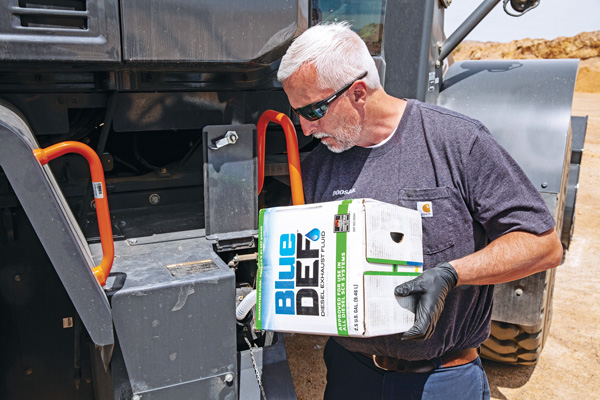
3. Inspect the tires. Tires are essential to a wheel loader and should be inspected regularly. Undetected leaks or improper inflation can lead to premature wear, unexpected downtime and potentially tire failure over time.
Make sure you’re familiar with your loader manual’s recommendations for proper psi, and inflate the tires accordingly.
“Complete a thorough visual inspection to detect missing tread and ensure that the bead line and the rim are intact,” Zak says.
4. Check the driving and parking brakes. Driving and parking brakes are used daily on wheel loaders and need to be in good condition.
Many quarry and aggregate applications are congested worksites, often with multiple pieces of equipment, vehicles and workers. There will likely be quick stops during normal loading procedures. You must be able use the driving brake, but also hold it with the machine’s parking brake if necessary.
5. Stay on top of fluids, oils and filters. Fluids, such as engine oil and coolants, need to be closely monitored to prevent unnecessary downtime. Using dipsticks and sight gauges will help ensure the proper fluid level is maintained.
“Always refer to the manual for instructions on filling the machine at the recommended intervals with the appropriate fluid in the correct increments,” Zak says.
New wheel loaders have been engineered with engine aftertreatment systems that are designed to clean the diesel engine exhaust and meet the U.S. Environmental Protection Agency’s emission standards for Tier 4-compliant engines. Because each equipment manufacturer has a slightly different emissions strategy, follow their guidelines for maintenance and service.

6. Maintain the cooling system. Quarries can generate a lot of dust, so some manufacturers have incorporated advanced reliable cooling systems to minimize machine downtime.
“A variable-speed cooling fan slows and speeds up as required by the work demands of your loader,” Zak says. “A standard reversible cooling fan is adjustable from inside the cab to assist in keeping the cooling system clean in extremely dusty applications.”
On select wheel loader models, optimal radiator fin spacing is available to quickly clear dirt, dust and other large debris and reduce clogging – while keeping the cooling system performing constantly. This can be particularly helpful in aggregate applications.
7. Check enhancements inside the cab. Newer wheel loaders have enhancements that make them not only more comfortable to operate, but easier to maintain.
Some wheel loader manufacturers offer rearview cameras as standard equipment. Operators have better visibility to their surroundings with the rearview display on the LCD screen.
Also, today’s wheel loaders come with telematics management systems that allow you to monitor the health, location and productivity of equipment. You can monitor your wheel loaders remotely and address alerts quickly. Telematics information can be viewed on a mobile app or a browser on your computer.
Final thoughts
Wheel loaders are essential equipment for aggregate producers to move and place large materials. But to stay productive, they need proper and frequent maintenance. Follow these tips and talk with your local dealer to learn more about how to maintain your loader.
Allison Grettenberg handles strategic communications for Two Rivers Marketing. Information for this article provided by Develon.

